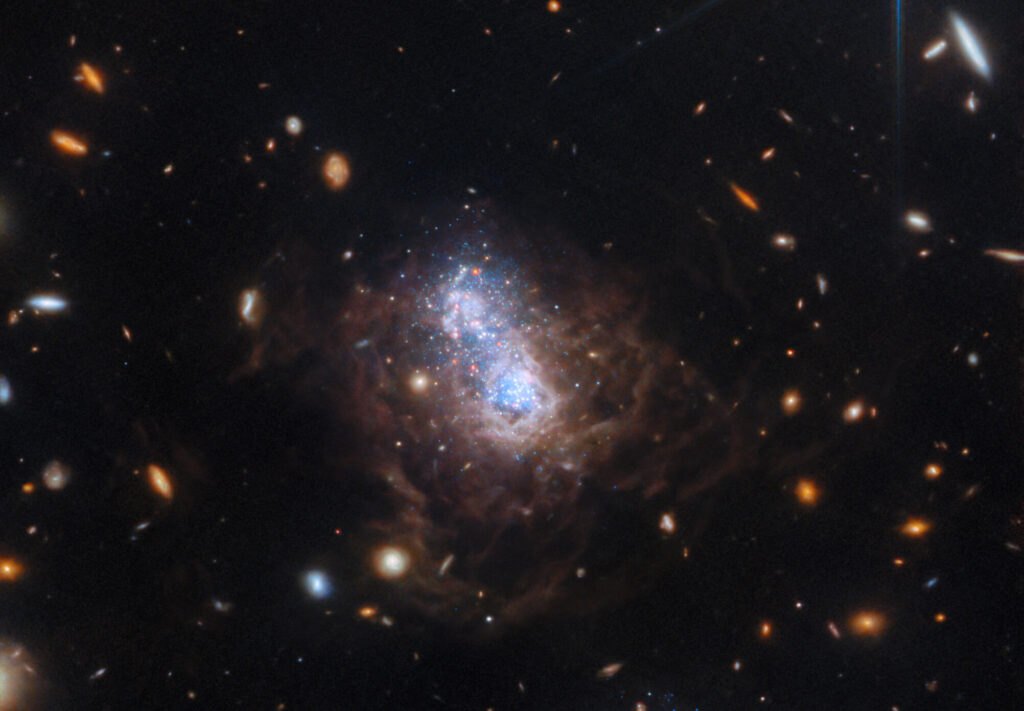Astronomers working with the James Webb Telescope (JWST) have published a spectacular new image. It shows the dwarf galaxy I Zwicky 18.

I Zwicky 18 is located at a distance of 59 million light-years from Earth in the direction of the constellation Ursa Major. The JWST image is dominated by two bright areas strewn with many dots. These are regions of active star formation. Before our eyes, I Zwicky 18 is forming a very large number of new luminaries.
In the JWST photo, you can also see brown filaments surrounding the central region of star formation. These are gas bubbles heated by intense ultraviolet radiation emitted by hot young stars. As for the orange spots surrounding I Zwicky 18, these are background galaxies located at a much greater distance.
According to the researchers, I Zwicky 18 resembles ancient galaxies formed after the Big Bang. They also did not have an orderly structure and were extremely active in forming new stars. Based on this, as well as the fact that I Zwicky 18 contains few heavy elements, until recently astronomers believed that it was very young. Its age was estimated at only 500 million years, making it one of the youngest galaxies in the universe.
However, I Zwicky 18 is much older than it looks. Hubble telescope observations have shown that there are stars in the galaxy which are at least a billion, and possibly even 10 billion years old. Thus, I Zwicky 18 could have formed at the same time as most other galaxies. As for its abnormal activity, the reason for this is most likely the interaction of I Zwicky 18 with a neighboring galaxy. Gravitational perturbations could lead to the condensation of gas and dust clouds, which triggered an outbreak of star formation.
According to https://esawebb.org
Follow us on Twitter to get the most interesting space news in time
https://twitter.com/ust_magazine


